Learn how to make campfire sauce with this simple step-by-step recipe. Perfect for outdoor cooking, this versatile sauce adds smoky depth to meats, veggies, and more—no fancy equipment needed.
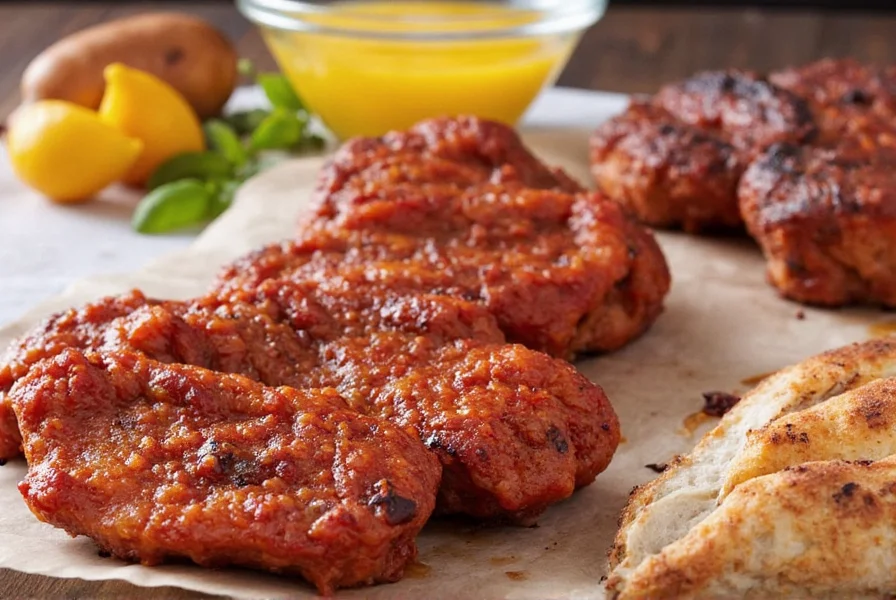
Classic Smoky Campfire BBQ Sauce Recipe
Here's everything you need to create a rich, smoky sauce that survives heat fluctuations and enhances any campfire meal:
- Tomato paste – 1/2 cup
- Apple cider vinegar – 1/4 cup
- Dark brown sugar – 2 tbsp
- Molasses – 1 tbsp
- Smoked paprika – 1 tsp
- Garlic powder – 1/2 tsp
- Onion powder – 1/2 tsp
- Liquid smoke – 1/2 tsp (optional)
- Water or broth – as needed
- Prepare base paste: Combine tomato paste, molasses, vinegar, and spices in a bowl. This creates a concentrated foundation that prevents burning during cooking.
- Simmer gently: Transfer to a cast iron Dutch oven or heat-resistant pot. Simmer over indirect heat for 20-30 minutes, stirring frequently.
- Adjust consistency: Gradually add water or broth until you reach your desired thickness.
- Enhance smokiness: Finish with a dash of charcoal ash or hickory wood chips for authentic campfire flavor.
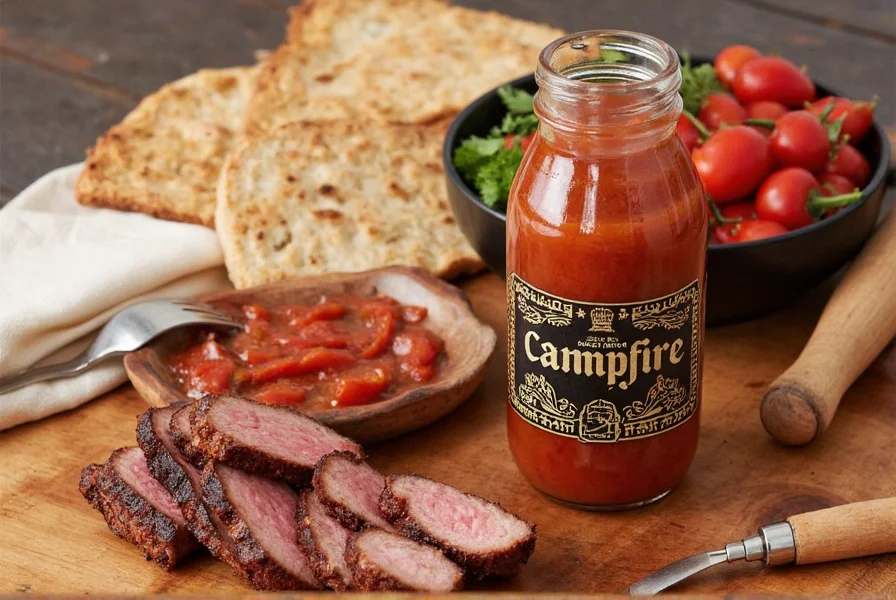
Maple Bacon Campfire Glaze Recipe
For sweet and savory lovers, this glaze transforms grilled salmon or ribs into showstopper dishes:
- Bacon grease – 2 tbsp
- Pure maple syrup – 1/3 cup
- Blackstrap molasses – 1 tbsp
- Smoked sea salt – 1/2 tsp
- Crushed red pepper flakes – 1/4 tsp
- Water or apple juice – 2-3 tbsp
- Melt fats: In a small pan, melt bacon fat over low heat.
- Combine ingredients: Whisk in maple syrup, molasses, and spices until smooth.
- Simmer and thicken: Cook for 10-15 minutes until glossy and thickened. Add liquid as needed for desired consistency.
| Hack | Pros | Cons |
|---|---|---|
| Charcoal Ash Flavor | Easy, cheap, smoky depth | Messy if overused |
| Dried Fruit Addition | Natural sweetness, thick texture | Takes longer to break down |
| Cast Iron Cooking | Even heat, durable | Heavy to carry |
| Wood Chip Infusion | Delicious aroma, unique | Requires soaking ahead |
Essential Gear for Campfire Sauce
These tools ensure perfect results in any outdoor setting:
- Cast Iron Dutch Oven (12-inch)
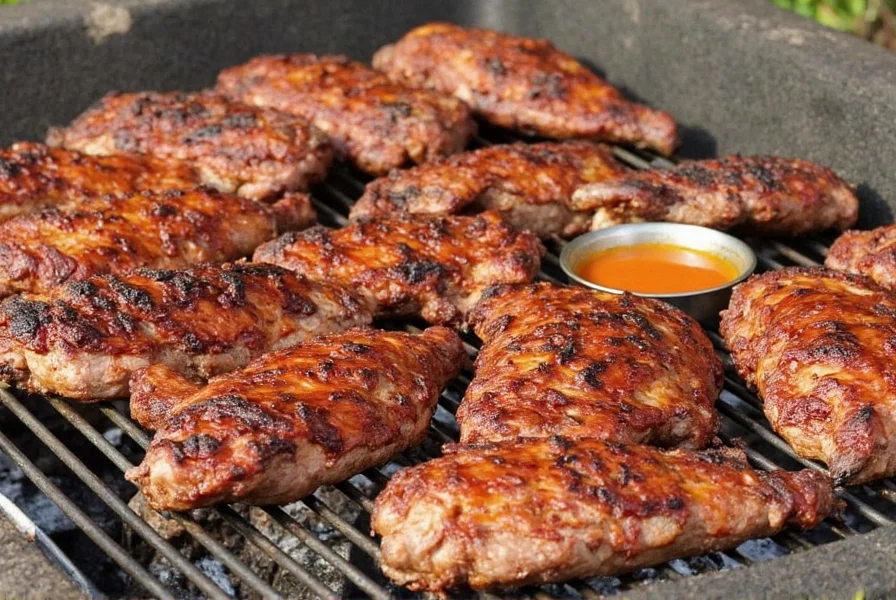
Thick walls for even heating. Best for long-simmered sauces and group meals.
- Compact Spice Shakers
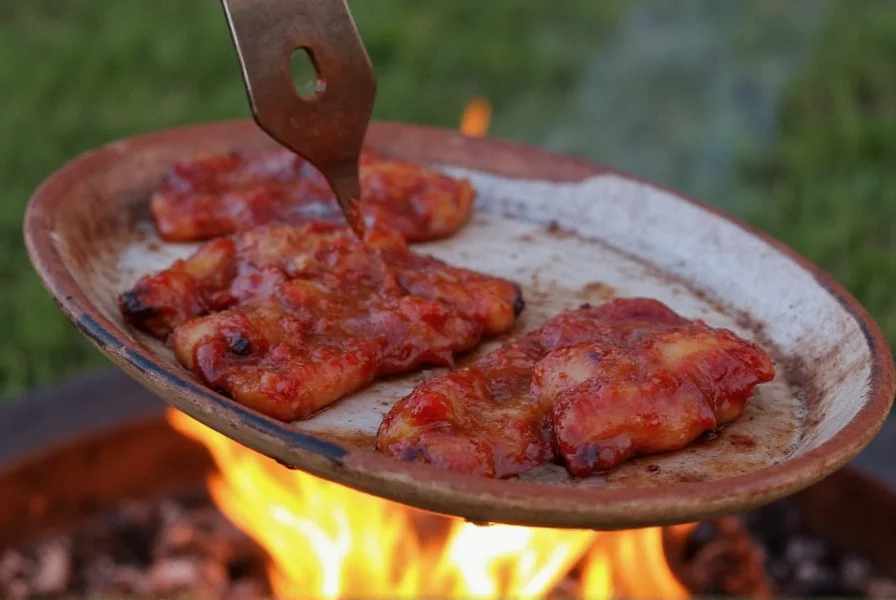
Leak-proof, lightweight storage for pre-mixed spice blends.
- Silicone Collapsible Mixing Bowl
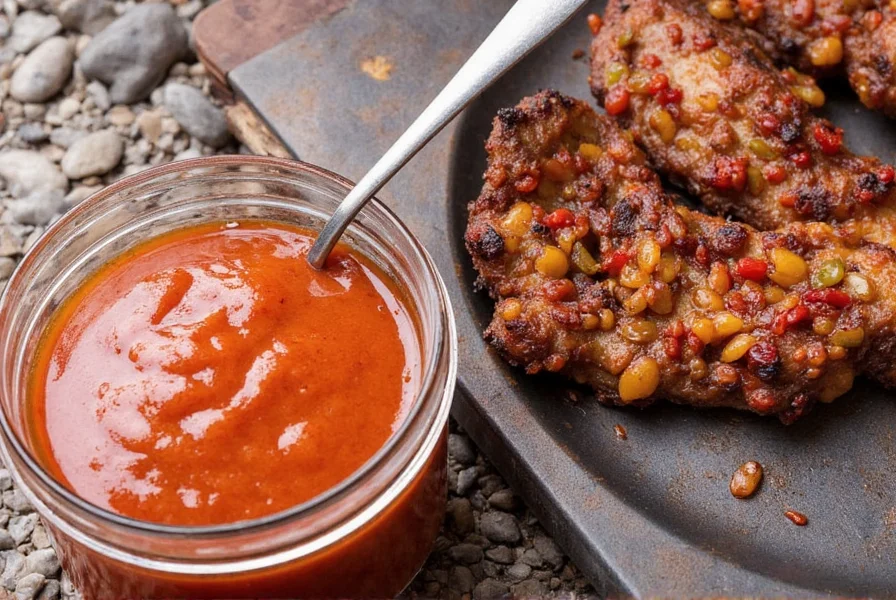
Space-saving design for ingredient prep on the trail.
Spice Storage Tips for Camping
- Vacuum seal for moisture protection
- Use salt as a natural desiccant in spice containers
- Label everything with waterproof markers
- Organize by flavor profile for quick access
Frequently Asked Questions
What are the essential ingredients for a basic campfire sauce?
A basic campfire sauce requires tomato paste (base), vinegar (acidity), sweeteners like brown sugar or molasses, and spices including smoked paprika, garlic powder, and onion powder. Campfire-specific elements like charcoal ash or wood chips add authentic smokiness.
How do I prevent my sauce from burning over a campfire?
Use indirect heat and a heavy-bottomed pot like cast iron. Always prepare a base paste (tomato paste + spices + vinegar) before adding liquids, and stir frequently. Never cook over direct flames.
How long does homemade campfire sauce last while camping?
Stored in reusable silicone bags or airtight containers away from sunlight, it stays fresh for 3-4 days. For longer trips, make dry spice mixes and combine with wet ingredients as needed.
Can I make campfire sauce without a Dutch oven?
Yes! Use any heat-resistant pot. For no-cookware situations, try the "double-boil with rocks" method: heat smooth river rocks in the fire, then place them in a metal bowl with sauce ingredients to avoid direct flame contact.
Conclusion
With this simple recipe and practical tips, you'll transform any campfire meal into a gourmet experience. Remember: low heat, proper equipment, and campfire-specific smoke techniques are key to perfect sauce every time.
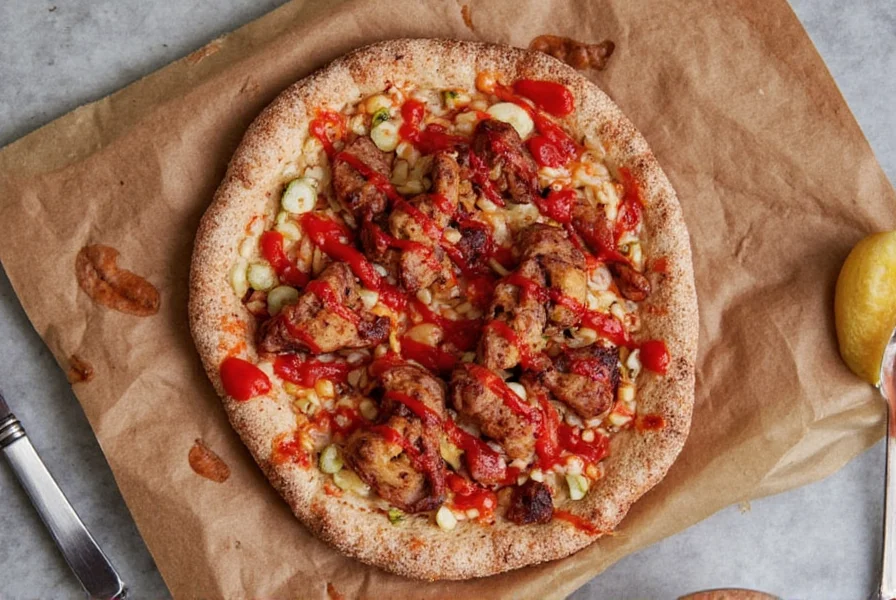










 浙公网安备
33010002000092号
浙公网安备
33010002000092号 浙B2-20120091-4
浙B2-20120091-4